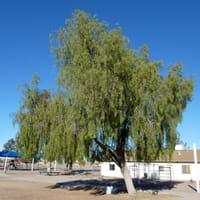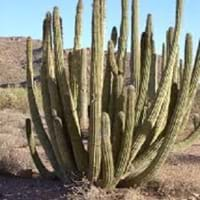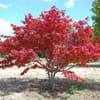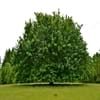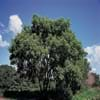Life Span
Perennial
Perennial
Type
Tree
Cactus or Succulent
Origin
Australia
Southwestern United States, Mexico
Types
Not Available
Not Available
Habitat
Tropical Forests
Dry areas, Hillside, Semi desert
USDA Hardiness Zone
10-11
Not Available
AHS Heat Zone
12-10
12-10
Sunset Zone
8, 9, 12, 13, 14, 15, 16, 17, 18, 19, 20, 21, 22, 23, 24
9, 10, 11, 12, 13, 14, 15, 16, 17, 18, 19, 20, 21, 23, 24
Habit
Upright/Erect
Clump-Forming
Flower Color
Yellow
White, Lavender
Flower Color Modifier
Bicolor
Not Available
Leaf Color in Spring
Dark Green
Not Available
Leaf Color in Summer
Dark Green
Not Available
Leaf Color in Fall
Dark Green
Not Available
Leaf Color in Winter
Dark Green
Not Available
Plant Season
Not Available
Spring, Summer, Fall, Winter
Sunlight
Full Sun
Full Sun
Type of Soil
Clay, Loam, Sand
Loam, Sand
The pH of Soil
Acidic, Neutral
Neutral
Soil Drainage
Well drained
Well drained
Bloom Time
Fall, Winter
Not Available
Tolerances
Drought
Drought
Where to Plant?
Ground
Ground, Pot
How to Plant?
Seedlings
Seedlings
Plant Maintenance
Medium
Medium
Watering Requirements
Average Water Needs
Do not water frequently, Does not require lot of watering, Water occasionally
In Summer
Lots of watering
Lots of watering
In Spring
Moderate
Moderate
In Winter
Average Water
Average Water
Soil pH
Acidic, Neutral
Neutral
Soil Type
Clay, Loam, Sand
Loam, Sand
Soil Drainage Capacity
Well drained
Well drained
Sun Exposure
Full Sun
Full Sun
Pruning
Remove damaged leaves, Remove dead branches, Remove dead leaves
Remove damaged leaves, Remove dead branches, Remove dead leaves
Fertilizers
All-Purpose Liquid Fertilizer
All-Purpose Liquid Fertilizer
Pests and Diseases
Red blotch
Red blotch
Plant Tolerance
Drought
Drought
Flowers
Insignificant
Showy
Flower Petal Number
Single
Single
Foliage Texture
Fine
Bold
Foliage Sheen
Matte
Not Available
Self-Sowing
Yes
Not Available
Attracts
Butterflies
Hummingbirds
Allergy
Not Available
Skin irritation, sneezing
Aesthetic Uses
Showy Purposes
Not Used For Aesthetic Purpose
Beauty Benefits
Not Available
Not Available
Environmental Uses
Air purification
Air purification
Medicinal Uses
Not Available
Not Available
Part of Plant Used
Flowers, Root, Seeds
Not Available
Other Uses
Charcoal, Edible yellow dye is obtained, Used As Food
Showy Purposes
Used As Indoor Plant
No
Yes
Used As Outdoor Plant
Yes
Yes
Garden Design
Screening / Wind Break, Shade Trees, Street Trees
Container, Feature Plant, Houseplant, Rock Garden, Wall
Botanical Name
ACACIA salicina
STENOCEREUS thurberi
Common Name
Cooba, Willow Acacia
Organ pipe Cactus
In Hindi
willow acacia
Organpipe cactus
In German
Weiden Akazie
Organpipe cactus
In French
saule acacia
Orgue cactus
In Spanish
acacia sauce
Cactus del tubo de órgano
In Greek
ιτιά ακακίας
Εκκλησιαστικό όργανο κάκτος
In Portuguese
salgueiro de acácia
Cacto da tubulação de órgão
In Polish
wierzba akacji
Organ Pipe Cactus
In Latin
lignis salices
Organum Pipe cactus
Phylum
Magnoliophyta
Not Available
Class
Magnoliopsida
Magnoliopsida
Order
Fabales
Caryophyllales
Family
Fabaceae
Cactaceae
Clade
Angiosperms, Eudicots, Rosids
Angiosperms, Core eudicots, Eudicots
Tribe
Not Available
Pachycereeae
Subfamily
Not Available
Cactoideae
Number of Species
Not Available
Not Available
Properties of Willow Acacia and Organpipe Cactus
Wondering what are the properties of Willow Acacia and Organpipe Cactus? We provide you with everything About Willow Acacia and Organpipe Cactus. Willow Acacia doesn't have thorns and Organpipe Cactus doesn't have thorns. Also Willow Acacia does not have fragrant flowers. Willow Acacia has allergic reactions like Not Available and Organpipe Cactus has allergic reactions like Not Available. Compare all the properties and characteristics of these two plants. Find out which of these plant can be used as indoor plant. If you are interested to decorate your house and garden, find out aesthetic uses, compare them and select the plant which will beautify your surrounding. Along with beautification, try comparing medicinal and edible uses of Willow Acacia and Organpipe Cactus and you can choose the plant having best and most benefits.
Season and Care of Willow Acacia and Organpipe Cactus
Season and care of Willow Acacia and Organpipe Cactus is important to know. While considering everything about Willow Acacia and Organpipe Cactus Care, growing season is an essential factor. Willow Acacia season is Not Available and Organpipe Cactus season is Not Available. The type of soil for Willow Acacia is Clay, Loam, Sand and for Organpipe Cactus is Loam, Sand while the PH of soil for Willow Acacia is Acidic, Neutral and for Organpipe Cactus is Neutral.
Willow Acacia and Organpipe Cactus Physical Information
Willow Acacia and Organpipe Cactus physical information is very important for comparison. Willow Acacia height is 610.00 cm and width 370.00 cm whereas Organpipe Cactus height is 300.00 cm and width 120.00 cm. The color specification of Willow Acacia and Organpipe Cactus are as follows:
Willow Acacia flower color: Yellow
Willow Acacia leaf color: Dark Green
Organpipe Cactus flower color: White and Lavender
- Organpipe Cactus leaf color: Not Available
Care of Willow Acacia and Organpipe Cactus
Care of Willow Acacia and Organpipe Cactus include pruning, fertilizers, watering etc. Willow Acacia pruning is done Remove damaged leaves, Remove dead branches and Remove dead leaves and Organpipe Cactus pruning is done Remove damaged leaves, Remove dead branches and Remove dead leaves. In summer Willow Acacia needs Lots of watering and in winter, it needs Average Water. Whereas, in summer Organpipe Cactus needs Lots of watering and in winter, it needs Average Water.
